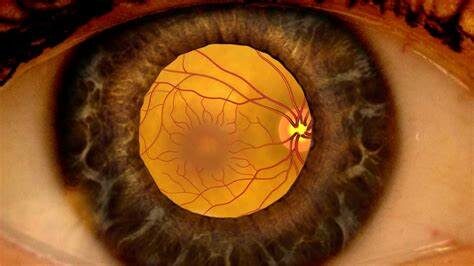Eye dilation is a critical part of a comprehensive eye exam, allowing eye care professionals to thoroughly examine the back of the eye, including the peripheral retina, optic nerve, and blood vessels. This procedure is essential for early detecting a variety of eye conditions, including diabetic retinopathy, macular degeneration, and glaucoma, which may not be visible without dilation or the use of advanced technology. However, not every patient may require dilation at every visit. Understanding when and why you might need one is important for maintaining optimal eye health, particularly with today’s technology and with findings from recent studies.
The Importance of Eye Dilation
By state law and standards of care, retina health needs to be evaluated at every comprehensive eye exam. Eye dilation involves the use of special eye drops to widen the pupil, providing a better view of the internal structures of the retina. this enhanced view enables the detection of early signs of eye diseases that could otherwise go unnoticed, or have risk factors for retina conditions include age, a family history of eye disease, symptoms of eye problems, and the presence of systemic conditions like diabetes or hypertension.
Recommendations by the AOA and AAO
The American Academy of Ophthalmology (AAO) emphasizes the importance of eye dilation in detecting eye diseases. According to the AAO, it should be performed periodically, especially for individuals at higher risk of eye diseases. The frequency depends on various factors, including age, health history, and the presence of symptoms.
The American Optometric Association (AOA) recommends that eye dilation be part of a comprehensive eye exam, particularly for patients with certain risk factors. The AOA recommends that adults aged 60 and older should have their eyes dilated more often due to the increased risk of eye diseases such as macular degeneration and glaucoma. Younger adults, especially those without symptoms or risk factors, may require it less frequently, but it’s still an important part of their regular eye health regimen.
Using Advanced Technology: Optos Retinal Imaging
In recent years, advanced imaging technologies like Optos or Eidon have provided an alternative or supplement to traditional dilation. Optos retinal imaging uses ultra-widefield technology to capture detailed images of up to 92% of the retina at one time without the need for dilation in some cases. This technology can detect a range of eye conditions and is particularly useful for patients who cannot tolerate eye drops.
However, while Optos offers significant advantages, it does not entirely replace the need for dilation in every situation, rather it supplements it. The decision to use Optos or to dilate the eyes should be made by the eye care professional based on the patient’s individual needs and risk factors.

Do You Really Need a Dilation Every Year?
“In the absence of symptoms, routine DFE seems to have a very low yield for discovery of serious ocular events and appears to be ineffective in altering the course of incidental findings. Routine DFE is not indicated for older, asymptomatic patients—even at decade intervals.”
According to a recent study published on PubMed, while advanced imaging technologies like Optos are beneficial, traditional dilation remains crucial in certain scenarios. The study emphasizes that the need should be determined by the eye doctor based on the patient’s symptoms and medical history.
“In the end, it is the presence of patient symptoms that becomes the most important prognostic indicator associated with clinically significant, peripheral retinal findings.”
In some cases, especially where detailed examination of the peripheral retina is needed due to high-risk conditions, like diabetes, or symptoms, like flashes and floaters, dilation is indispensable.
When Is Dilation Necessary?
The decision to perform eye dilation is based on several factors, including:
- Age: Older adults are at higher risk for eye diseases
- Health History: Patients with diabetes, uncontrolled high blood pressure, or a family history of eye disease
- Symptoms: If you’re experiencing symptoms like blurred vision, eye pain, or floaters
- Previous Findings: If past eye exams have revealed issues such as retinal tears or other abnormalities
- High Nearsightedness: If your eyeglass prescription is great than a -4.00 you are at higher risk of developing retinal tears, holes, and detachments
The Benefits of Dilation
Eye dilation provides a comprehensive view of the back of the eye, allowing for early detection of a range of eye conditions. This early detection is critical in preventing vision loss and managing eye diseases. It is particularly beneficial for:
- Diabetic Patients: Diabetic retinopathy is a leading cause of blindness, and early detection can prevent severe vision loss.
- Older Adults: Conditions like macular degeneration and glaucoma are more common in older adults and can be detected early
- Patients with Symptoms: If you’re experiencing symptoms like flashes of light, sudden vision loss, or floaters, it can help identify the underlying cause.
Risks and Side Effects
While eye dilation is generally safe, it can cause temporary side effects, including:
- Blurred Vision: your vision may be blurry for several hours. This can affect your ability to read or perform tasks that require clear vision.
- Light Sensitivity: increased sensitivity to light, so wearing sunglasses is recommended until the effects wear off.
These side effects typically resolve within a few hours, but it’s important to plan your day accordingly. If you have concerns about dilation, discuss them with your eye care provider.
In rare cases, dilation may cause the drainage system of the eye to close, which may lead to a condition called angle-closure glaucoma. Patients are evaluated prior to dilation to determine their risk.
Are There Any Alternatives?
For some patients, Optos retinal imaging can be an effective alternative to traditional dilation. Optos captures a widefield image of the retina without the need for dilation drops, making it a convenient option for those who cannot tolerate dilation or need to return to work or drive soon after their appointment.
However, it’s important to understand that while Optos provides a detailed view of the retina, it may not be sufficient in every case. Some conditions, particularly those affecting the peripheral retina, may still require dilation for a thorough examination. In these cases, an Optomap photo will still be taken to supplement the dilation, rather than be an alternative for it.
The Role of Eye Doctors in Determining the Need for Dilation
Ultimately, the decision to dilate your eyes during an exam should be made by you and your eye doctor. They will consider your individual risk factors, symptoms, and medical history to determine whether dilation is necessary. If you have concerns, don’t hesitate to discuss them with your eye care provider. They can explain the benefits and help you make an informed decision.
Eye Dilation as a Key Component of Eye Health
Eye dilation is a vital tool in the detection and management of eye diseases. While advanced imaging technologies like Optos offer significant benefits, they do not entirely replace the need for traditional dilation in every situation and they may both be performed for some. The decision to dilate should be based on a comprehensive evaluation by your eye care provider, considering your individual risk factors and symptoms.
Regular eye exams are essential for maintaining optimal eye health. By understanding when and why dilation is needed, you can take proactive steps to protect your vision and overall health.
Incorporating the latest technologies while adhering to established best practices, such as those recommended by the AOA and AAO, ensures that you receive the highest quality of care. Whether you require dilation or can benefit from advanced imaging, the key is to prioritize your eye health and work closely with your eye care provider to determine the best approach for your needs.
At Optical Illusions: An Optometric Practice, we prioritize your eye health and provide the best voted eye exams. Our experienced optometrists and opticians use state-of-the-art technology to evaluate your eye health. Contact our team to schedule your appointment at 1 of our 4 conveniently located offices using your VSP insurance benefits.




